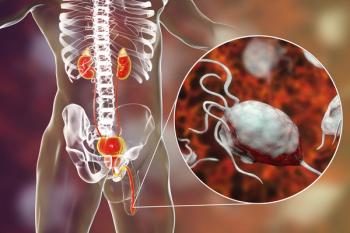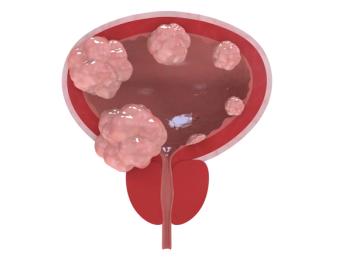
- ONCOLOGY Vol 11 No 2
- Volume 11
- Issue 2
Molecule May Be a Marker for Deadly Prostate Cancer
Improved diagnostic techniques for prostate cancer, the most common cancer among American men, have led to a threefold increase in the rate of diagnosis since 1988. But that presents physicians with a dilemma: Many of these early cancers are
Improved diagnostic techniques for prostate cancer, the most commoncancer among American men, have led to a threefold increase in the rateof diagnosis since 1988. But that presents physicians with a dilemma: Manyof these early cancers are relatively benign and do not warrant aggressiveintervention. How is the physician to tell which cancers will go on todevelop life-threatening metastases?
Harvard researchers may have found a way. In the December issue of NatureMedicine, a research team led by Lere Bao, instructor in surgery atChildren's Hospital, Boston, reports the identification and genetic descriptionof a telltale molecule: thymosin B15, a protein involved in cell motility.The researchers found that, in an animal model, the protein gears up thecancer cell's ability to move around the body, which is part of the progressionof metastasis. They also note that thymosin B15 is not expressed in normalor benign human prostate cells but appears at high levels in human prostatecancers with high metastatic potential.
Apparently, the protein helps the cancer cell break free of its attachmentsto neighboring cells and surrounding tissue, allowing it to course throughthe body and form secondary tumors elsewhere.
Other authors are Massimo Loda and Robert Stewart, Beth Israel DeaconessMedical Center; Paul A. Janmey, Brigham and Women's Hospital; and BelaAnand-Apte and Bruce R. Zetter, Children's Hospital.
Articles in this issue
almost 29 years ago
Postmastectomy Radiation: Then and Nowalmost 29 years ago
Key Gene Plays Crucial Role in Malignant Transformationalmost 29 years ago
Gene Associated With Spread of Prostate Cancer Identifiedalmost 29 years ago
Lurie Cancer Center Support Grant Renewedalmost 29 years ago
Investigators Pinpoint Gene That Suppresses Spread of Melanomaalmost 29 years ago
New Technology Helps Scientists Study Early Canceralmost 29 years ago
Scientists Discover Protein Responsible for DNA Replicationalmost 29 years ago
Antiestrogens: Past, Present, and FutureNewsletter
Stay up to date on recent advances in the multidisciplinary approach to cancer.






















































































